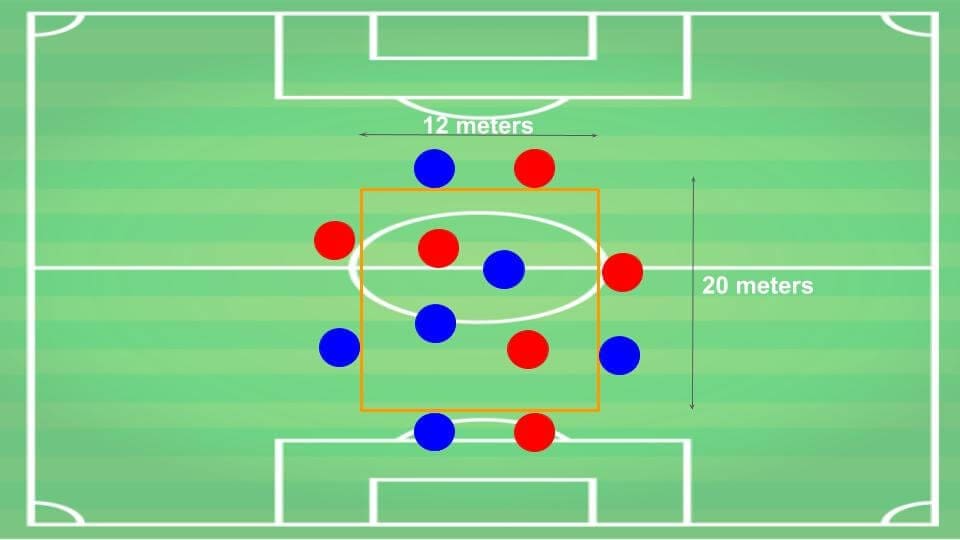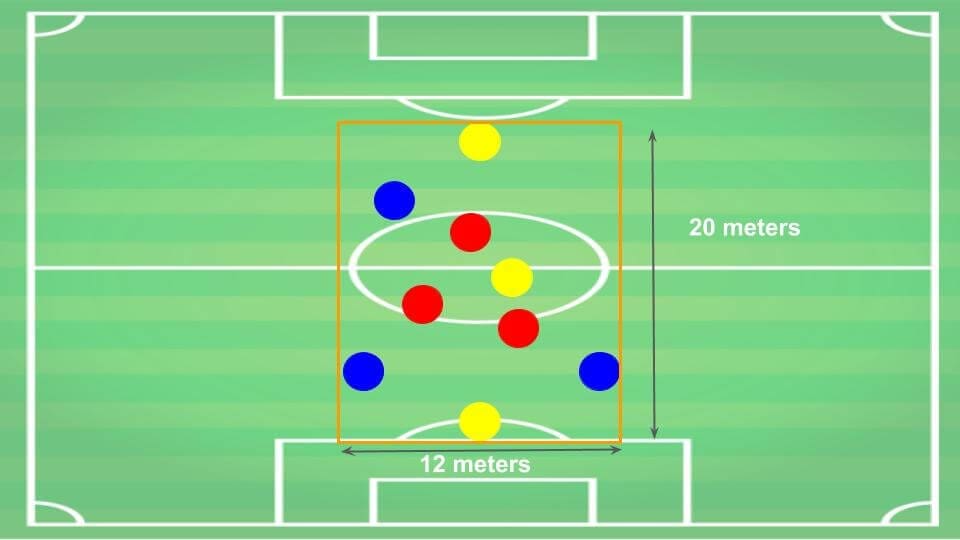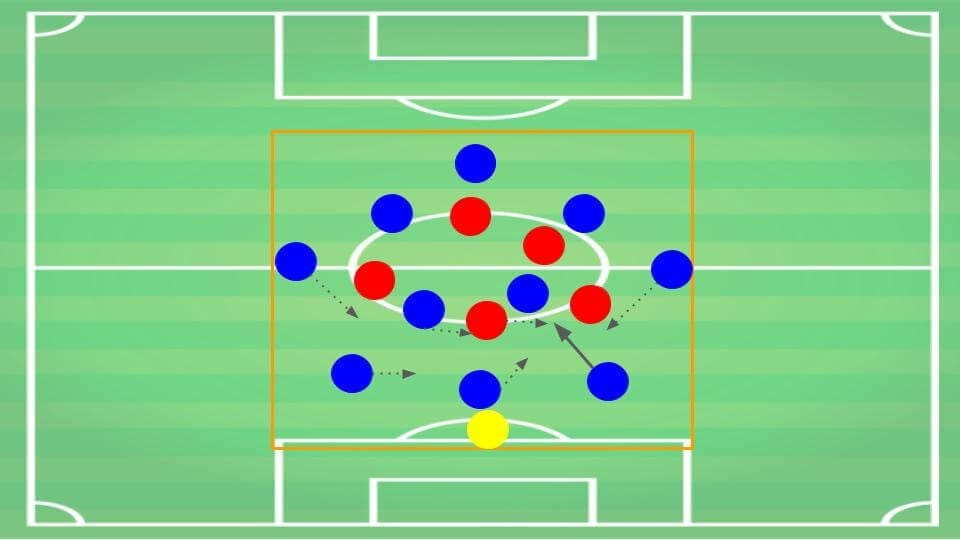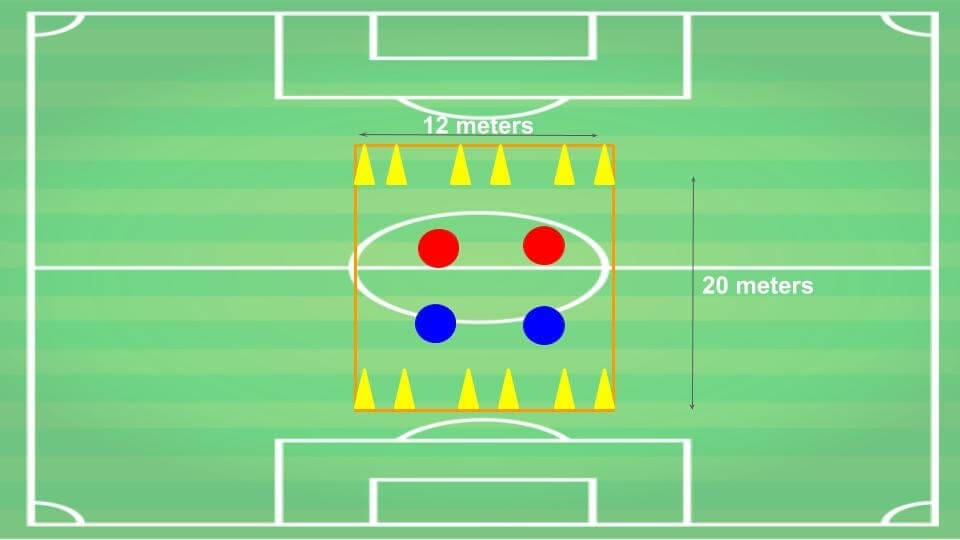Pre-season. When you hear that word you probably think of heavy long-distance runs or high-speed intervals in the sun. Probably on a football pitch. But no balls are used. In a game such as football, where a ball IS used, I believe most, if not all, training should be done with the ball at the feet of the players. This is especially the case of young footballers. As someone who’s worked with young players in the ages of 13-19 for several seasons, I know every single player prefers to play rather than run. Still, many coaches prefer running over, for example, small-sided games when trying to improve the football-fitness of their players. In this post, I’ll present a suggestion of how your pre-season training can improve the fitness of your players – whilst also ensuring they enjoy pre-season training.
Same, or better, fitness-levels achieved through playing
A few years ago, I was part of a group who tested which maximum fitness-levels were reached in two different ways; interval running or a small-sided game of 4 vs 4. All players were given heart straps and pulse watches as their heart-rate and maximum pulse was monitored. This was repeated with different groups too. The question beforehand was how the effort the players were forced to put in would differ between the two vastly different exercises.
The results were remarkably similar. The pulse curves were on the same high level, inches away from the maximum pulse on both tests, until the last set of respective exercise when the interval running stats dipped slightly, but the game stats remained on the same level. This proved you can reach the same maximum level of fitness work, and maintain it for longer, playing a small-sided game at a high tempo rather than running in intervals. I suspect the late dip in the intervals, as opposed to the maintaining of the same level in the small sided game, comes from the players not enjoying running compared to football and therefore not giving the same effort towards the end. This is only natural, of course; most people bring more energy to things they love doing as opposed to things they hate doing.
After this evidence, my view is that if you can reach the same level of effort from the players when they play small-sided games as when they do interval-running without the ball then why would you insist on continuing running? It’s more enjoyable for the players and you, as a coach, can work on your game model whilst improving the players’ fitness levels. Furthermore, you can involve all four pillars of player development in these exercises; technique, football intelligence, physiology and psychology (the so-called educational wheel). Compare this with running without the ball where you only get physiology and possibly a bit of psychology.
Choosing this approach to fitness requires a very organized training setup as well as a thorough coach who keeps the players’ intensity throughout the exercises. Below I’ll explain some exercises I use to improve the fitness levels of my players.
Possible football-fitness exercises
Every session needs a good warm-up and this is especially true when you are going to work on the players’ fitness-levels as the intensity will take its toll. I suggest doing something technical with additions of coordination and some activation movements. Then, it’s time to work on the fitness aspect. The three exercises I’ll list below shouldn’t be used in the same session as the effort might be too great for some players. See this merely as a suggestion you can take ideas from.
2 vs 2 possession game with wall-players

With my U15s, I currently work a lot on movements to receive and create space which makes this exercise perfect. I use 12 players divided into two teams of six. Each team then sends two players into the middle of a rectangle with the dimensions shown in the image. This gives us a 2 vs 2 game in the centre of the rectangle with four wall-players from each team on the outside. The two in the middle then try to keep possession with the help of the wall-players and after each game, the players in the centre change with the wall-players. Play for games between 45-60 seconds initially and then add more time until reaching 90 seconds. After completing a game in the middle at a really high-intensity the players get two “rest-games” as wall-players. The rest is active though since they are still involved in the game with demands asked of their passing, vision and concentration. You can change the rules according to your own ideas; only using wall-players of your own colour, using all wall-players or wall-players forced to use one-touch to place higher demands on their involvement.
This exercise is very simple yet trains the movements you want to see in your style of play, it works the passing technique and ball-control of your players, their intelligence in creating and finding space, their pressing-technique (if you add that focus) and, of course, their fitness-levels. Play for maybe 15-20 minutes in total with short water-breaks in between every three or four games.
3 vs 3 + 3 jokers possession game

Continuing on the possession theme, I like to use this exercise quite often in my sessions. It needs 9 players divided into three teams of three. Two teams play each other inside the rectangle while the third is divided into two wall-players on respective short-side and one central joker to play with the team in possession. This creates a 6 vs 3 game when in possession of the ball. The dimensions might seem small but that’s because I prefer smaller pitches where the players have less time and have to think quicker. Also, the intensity goes up. You could easily make the pitch larger if you’d like. This exercise requires the coach to be involved fully to make sure new balls are put in as soon as it goes out of play. This keeps the intensity up. Play for games of 90 seconds and then rotate the teams. A total of 15-20 minutes will be enough to have your players well-worked.
In this exercise, I can work on positions I want my players to pick up in possession, I can stress the importance of width and depth as we try to move the ball forward, movements without the ball are vital and the players are forced to make a quick decision in possession. Their technique is also improved. For the defending team, I can focus on pressing-technique, cover of a pressing teammate and counter-pressing upon loss of possession. It’s an exercise that works perfectly for me in the way I want to play and also, vitally, in improving the fitness of the players.
11 vs 5 possession and transitional game

This game has a possession and transitional focus for me. The space I normally use is around 50 x 35 meters. Line up your team in your shape (3-4-2-1 for me) with the goalkeeper included, of course before adding five or six defensive players. The attacking team tries to keep possession from their positions on the pitch which makes the game very game-related. When the defensive team wins the ball they try to score in the goal the goalkeeper is guarding. This prompts a defensive transition from the possession team to stop the counter-attack. It’s up to you if that means counter-pressing or dropping back into the defensive shape as quickly as possible. This isn’t high-intensity like the earlier games but it’s still a demanding game for all players involved. On the plus side, you make them more comfortable in their positions on the pitch. Play for as long as you see fit. To create more transitions simply adapt your rules to limit touches or whatever you feel like.
2 vs 2 with goals

This might be the physically toughest exercise I’ll suggest. It’s a 2 vs 2 game with three cone-goals on each end line. By using three goals we remove the opportunity to just stand in front of one of the goals. This game works the player’s combination play and their collective defending as they press and cover for each other. After a goal is scored or the ball goes out of play, the team who should get the ball gets a new ball from their own end line. This prompts additional short sprints. Play for about 60 seconds. To make it even more fun for the players, you could make it into a tournament with multiple pitches where the winning team can advance into the next one. They might not even realize they are being worked to the limit. This is a superb football-fitness exercise.
Small-sided games such as 3 vs 3 and 4 vs 4 with goalkeepers are also perfect to improve the players’ fitness levels. Doing these or similar exercises in your pre-season training will improve your players’ football-fitness levels, their individual quality, their understanding of their role in your game model and finally, your team as a collective.
Summary
Coaching has definitely improved in the football-fitness regard in the last decade but there are still improvements to be made. Especially with young players, my personal opinion is that you should avoid doing running over playing given the limited sessions you probably have with your players. Coaching isn’t an exact science, of course, and there are some work you most do largely without the ball (balance or strength for example) or in isolated exercises. Many coaches will disagree with me but this is my suggestion and I’ve found it to work well with the different squads I’ve coached. We’ve never lost over a lack of running, that’s for sure. All players start playing football because they like the ball, they like kicking it and they like scoring. No kid starts playing football because they like running. My advice? Give them what they want.
Read more analysis here and here.
Analysis on Mario Mandzukic, Cristiano Ronaldo and Erling Haland can be found by clicking on the links provided.




Comments